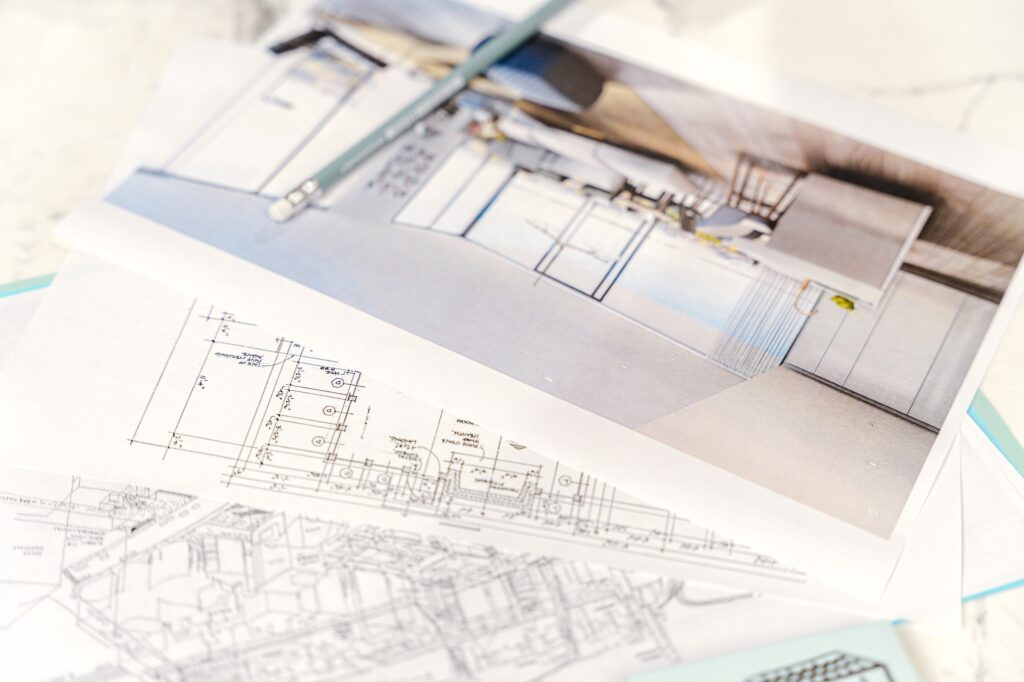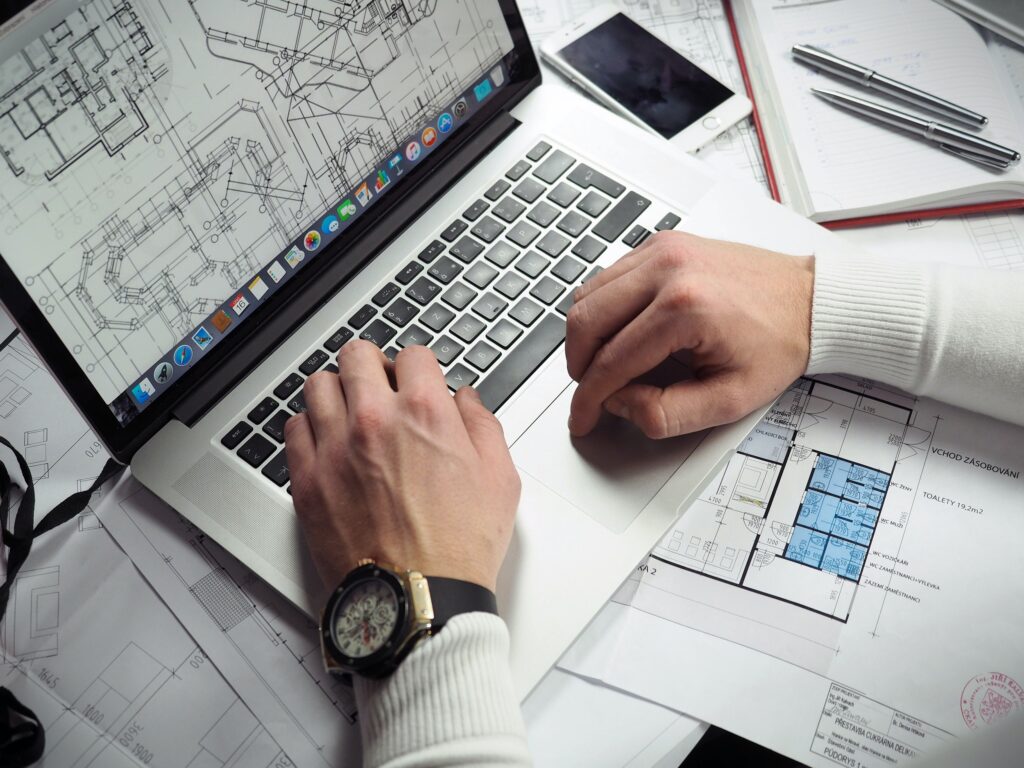Picture this: It’s a crisp morning, and you, a talented architect, sit in your cozy home office, sipping a steaming cup of coffee while immersed in the intricate design of a cutting-edge skyscraper.
No, this isn’t a scene from a utopian novel; it’s the reality of remote work for architects, an increasingly viable option in today’s interconnected world. If you are wondering if you can work from home or work remotely as an architect, the answer is yes, absolutely.
So, let’s dive into how you can succeed with this and everything you should be aware of.
The Rising Tide of Remote Work for Architects
While remote work was once seen as an anomaly reserved for freelancers or niche professions, it has now become an undeniable trend across various industries. With advancements in technology and changes in workplace culture, companies are starting to recognize that productivity and creativity are not tethered to traditional office setups.
From software development firms to marketing agencies and even healthcare providers – an increasing number of professionals are embracing flexible work arrangements. This transition has been accelerated by global events like pandemics that forced businesses worldwide to rethink how they operate.
Nowadays, remote work is no longer seen as a temporary solution but as a long-term strategy to achieve better work-life balance and employee satisfaction. This trend has created a ripple effect, leading architects to question whether they can break free from the confines of cubicles and explore the boundless potential of remote architecture.
As we embark on this journey exploring the world of remote work for architects, we will uncover its advantages, and address challenges that may arise.
The Traditional Office-based Architecture Profession
Working remotely as an architect is still very much the same disciplines and tasks that you face in office. So, let us start off by addressing what is expected of a “traditional” architect.
Role and Responsibilities of Architects
Architects are creative professionals who blend artistry, engineering, and practicality to design structures that shape our built environment. They are the masterminds behind the aesthetic appeal, functionality, and safety of buildings.
Architects play a pivotal role in transforming ideas into tangible structures that meet clients’ needs. To fulfill their responsibilities, architects engage in various tasks.
They collaborate with clients to understand their vision and requirements for a project. This involves conducting site visits to assess the area’s physical features and constraints.
Architects then develop initial concept designs by sketching or utilizing computer-aided design (CAD) software. Once the concept is approved, architects create detailed construction drawings that serve as blueprints for builders.
These drawings include precise measurements, material specifications, and technical details necessary for construction. Throughout the project’s lifespan, architects oversee the construction process to ensure compliance with design plans and address any unforeseen challenges that arise.
And all of this is possible in a remote setting. Whether you work from home as an architect or somewhere else, you are not confined to the offices of your employers.
Traditional Office-Based Architect Work Environment
Traditionally, architects have operated within office-based work environments where collaboration occurs face-to-face among team members. The physical office setting fosters real-time interactions where designers discuss ideas passionately around drafting tables or gather in conference rooms for brainstorming sessions.
The office environment also supports efficient communication channels between architects and other professionals involved in construction projects such as engineers or contractors. Additionally, direct access to resources such as libraries filled with architectural references or building materials catalogs has been seen as an advantage of traditional office settings.
Furthermore, working in an office allows architects to separate their professional lives from personal ones effectively. It provides a structured routine that helps maintain focus and facilitates teamwork in a controlled environment.
However, this traditional model is not without its limitations – commuting time can be inconvenient for some professionals while fixed working hours may restrict flexibility in personal life or hinder productivity due to distractions that naturally occur in shared office spaces.
But fear not, as the rise of remote work has presented new opportunities and solutions for architects seeking alternative work arrangements.

The Benefits of Remote Work for Architects
Now, if you are curious about working from home or remotely as an architect I have plenty of good news for you. There are tons of benefits with working remotely for architects – let’s dive into them.
Flexibility in Location and Schedule: Building Your Dream Office
Working as an architect from the comfort of your home or any desired location is undoubtedly one of the most enticing perks of remote work. Say goodbye to the soul-sucking commute and embrace the freedom to create your dream office space. Picture yourself nestled in a cozy corner filled with natural light, surrounded by inspiring artwork, or perhaps overlooking a stunning vista that sparks your creativity.
The possibilities are endless! Whether you prefer working amidst tranquil nature or within bustling city life, remote work allows you to curate an ideal environment that fuels your architectural genius.
Freedom to Set Your Own Working Hours: Liberating the Creative Spirit
Architects are notorious for their unwavering dedication and passion for their craft. Remote work offers you the autonomy to structure your day in alignment with your personal rhythm and creative process. No more rigid 9-to-5 schedules or feeling constrained by someone else’s idea of productivity!
If you find inspiration striking at midnight or during those precious early morning hours when the world is still asleep, remote work allows you to embrace these moments without stifling your creative spirit. With time freed up from commuting and unnecessary meetings, architects can allocate more energy towards achieving their best work.
Increased Productivity and Focus: Escaping Office Distractions
Let’s face it; traditional office settings can sometimes be breeding grounds for distractions – chatty colleagues, ringing phones, endless meetings – all conspiring against deep concentration. Remote work liberates architects from these disruptions, providing an environment conducive to heightened productivity and focus.
Imagine immersing yourself in intricate designs without constant interruptions, allowing ideas to flow organically as you delve into complex architectural challenges. By eliminating external disturbances present in typical office environments, architects can dedicate uninterrupted time to their projects, resulting in more efficient and high-quality work.
Personalized Workspace Conducive to Concentration: The Architect’s Oasis
Remote work permits architects the luxury of designing a personalized workspace that optimizes their concentration and creativity. This can be as simple as arranging your desk to reflect your unique preferences or going further by incorporating elements that inspire you, such as a collection of architectural books, sketches, or mood boards.
Moreover, remote work allows architects to customize their surroundings without restrictions imposed by office policies or shared spaces. By curating an oasis tailored specifically for themselves, architects can establish an atmosphere that nurtures their artistic vision and enhances the quality of their design process.
The advantages of remote work for architects are manifold. It not only grants them the freedom to choose any location as their workplace but also enables them to set flexible working hours aligned with their creative inclinations.
Remote work offers increased productivity and focus by eliminating distractions commonly experienced in traditional office settings and empowers architects to create personalized environments that enhance concentration and inspiration. With these advantages in mind, it is evident why many architects are embracing remote work as a means to achieve professional success while maintaining a fulfilling work-life balance.
Challenges and Solutions for Architects Who Work Remotely
Working remotely as an architect does not come without friction. However, this friction is certainly possible to overcome.
Collaboration and Communication: Embracing the Virtual Realm
Ah, the age-old challenge of collaborating seamlessly while being physically apart. For architects working remotely, this hurdle may seem daunting at first.
However, fear not! The wonders of modern technology come to the rescue.
Virtual communication tools have become the trusty sidekick for remote architects, enabling effective teamwork across distances. One such tool is video conferencing software like Zoom or Microsoft Teams.
These platforms allow architects to gather virtually in real-time, bridging the gap between their physical locations. Through video conferences, team members can discuss project details, share screens to showcase designs, and even engage in lively brainstorming sessions.
Regular Video Conferences Are a Catalyst for Project Success
In the realm of remote architecture work, regular video conferences play a vital role in ensuring projects stay on track. These virtual gatherings offer opportunities for architects to update one another on progress, discuss challenges faced during various stages of a project’s development, and collectively brainstorm creative solutions. By scheduling frequent video conferences with all team members involved – from designers to engineers – remote architects foster a sense of camaraderie despite physical separation.
Regular face-to-face interactions (albeit virtual) ensure that everyone remains aligned with project goals and timelines. Furthermore, these meetings foster an environment where questions can be asked and answered promptly, preventing any miscommunication or delays.
Technological Requirements For Architects Who Work Remotely
For remote architects striving for success beyond office walls, technological requirements become paramount. First and foremost on this list is a reliable high-speed internet connection – an architect’s lifeline in this digital era. Working remotely often involves handling data-heavy tasks such as rendering intricate 3D models or collaborating on large-scale architectural plans online.
Without a robust internet connection, these tasks can become cumbersome and time-consuming. Therefore, remote architects must invest in a dependable internet service provider that can handle the demands of their work.
In addition to internet connectivity, access to necessary software and hardware is crucial. Remote architects should ensure they have the latest design software, such as AutoCAD or Revit, installed on their devices to seamlessly work on projects.
Having powerful hardware – be it a high-performance desktop or a laptop with ample processing power – is equally important to tackle the resource-intensive nature of architectural design software. So fret not, dear remote architect!
Although collaboration and technology may pose challenges at first glance, they are not insurmountable obstacles. With virtual communication tools for effective teamwork and the right technological setup in place, you’ll be well-equipped to conquer any project with boundless creativity – even if you’re miles away from your colleagues.

Special Considerations for Remote Architects
Working remotely as an architect comes with some careful considerations. There are a number of legal and compliance factors that you need to be aware of.
Legal regulations and licensing requirements
When it comes to practicing architecture remotely, architects must navigate the intricate web of legal regulations and licensing requirements. Building codes and regulations vary from one locality to another, ensuring that structures are safe, functional, and compliant with local standards. For remote architects, this means staying well-versed in the specific building codes and regulations of each jurisdiction they work in.
It may require obtaining multiple licenses if working on projects in different regions. This can be a complex process that adds a layer of administrative work to the architect’s responsibilities.
Compliance with local building codes and regulations
One of the critical considerations for remote architects is ensuring compliance with all local building codes and regulations throughout the design process. Without physically being present in the project location, architects must thoroughly research and understand the unique requirements of each jurisdiction they work within.
This includes understanding zoning restrictions, fire safety standards, accessibility guidelines, environmental impact assessments, and more. Remote architects need to diligently collaborate with local consultants who possess an in-depth understanding of these specific requirements to ensure their designs meet all necessary criteria.
Possibility of needing multiple licenses in different jurisdictions
Working as a remote architect often involves taking on projects across various jurisdictions or even international borders. In such cases, it becomes essential to acquire multiple licenses to legally practice architecture within those regions. Each country or state typically has its own licensing board and process that must be followed diligently.
Obtaining these licenses requires submitting documentation pertaining to education qualifications, experience levels, references from previous projects, and sometimes passing additional exams or interviews. Remote architects need to be proactive in their pursuit of additional licenses while also keeping up-to-date with any changes or renewals required by each licensing authority.
Client interactions: effectively managing client expectations remotely
Successful client interactions are crucial for any architect, whether working remotely or in a traditional office setting. However, when working remotely, it becomes even more critical to establish effective communication channels and manage client expectations efficiently. Also, interpreting the body language of your client becomes harder.
Regular and clear communication is vital to ensure that clients are updated on the progress of their projects, address any concerns promptly, and make them an integral part of the decision-making process. Utilizing virtual presentations, walkthroughs, and renderings can help bridge the gap between remote architects and their clients, enabling them to visualize the design concepts effectively.
Practicing architecture remotely requires remote architects to navigate several special considerations. These include understanding legal regulations and licensing requirements specific to each jurisdiction they work in.
Compliance with local building codes and regulations is paramount for ensuring that designs maintain safety standards while meeting all necessary criteria. Remote architects may also need to obtain multiple licenses to legally practice in different regions.
Effective client interactions play a crucial role in managing client expectations remotely; utilizing virtual presentations and other visual aids helps enhance communication channels. By addressing these special considerations thoughtfully, remote architects can thrive in their profession while successfully delivering exceptional architectural projects worldwide.
Conclusion: Can Architects Work Remotely?
The adoption of remote work in the field of architecture brings forth numerous benefits, challenges, and considerations. The advantages of working remotely for architects include the flexibility to choose their ideal workspace and schedule.
This newfound freedom allows them to find inspiration in diverse environments while maintaining a healthy work-life balance. Additionally, remote work often leads to increased productivity and focus due to reduced distractions commonly found in traditional office settings.
However, there are challenges associated with remote architecture work that must be addressed. Collaboration and communication can be more challenging when team members are not physically present together.
Architects must rely on various virtual tools and technologies to ensure seamless teamwork and effective project management. Furthermore, technological requirements such as high-speed internet access and access to specialized software can pose obstacles that need careful consideration.
How Does the Future Look For Architects Who Work Remotely?
The future of remote architecture practices appears promising. As advancements in technology continue to reshape industries worldwide, architects have more opportunities than ever before to embrace flexible working arrangements. With virtual reality (VR) becoming increasingly accessible, architects can create immersive experiences for clients without being physically present at every meeting.
Furthermore, the COVID-19 pandemic has accelerated the acceptance and implementation of remote work across various professions – including architecture. Architects have adapted quickly by relying on virtual collaboration platforms and innovative visualization tools that enable them to continue designing projects remotely.
As we move forward, it is likely that a hybrid model combining both traditional office-based work with remote practices will become prevalent in architectural firms worldwide. This hybrid approach would allow architects to enjoy the benefits of face-to-face interactions when necessary while harnessing the advantages offered by flexible remote work arrangements.
While there are challenges associated with working as an architect remotely, such as effective collaboration and technological requirements, the benefits outweigh the drawbacks. Architects can experience increased productivity, greater flexibility, and improved work-life balance.
As the world becomes more interconnected and technology continues to advance, the future of remote architecture practices is promising. By embracing remote work alongside traditional methods, architects can unlock new opportunities for creativity and efficiency in their profession.
My name is Frederik
I am a passionate marketeer who loves the freedom that comes with working from home whenever I choose to do so.
I love getting nerdy with every single detail about making everything related to my home just a tiny bit better.
That is what motivates me to write about home stuff on this blog.


